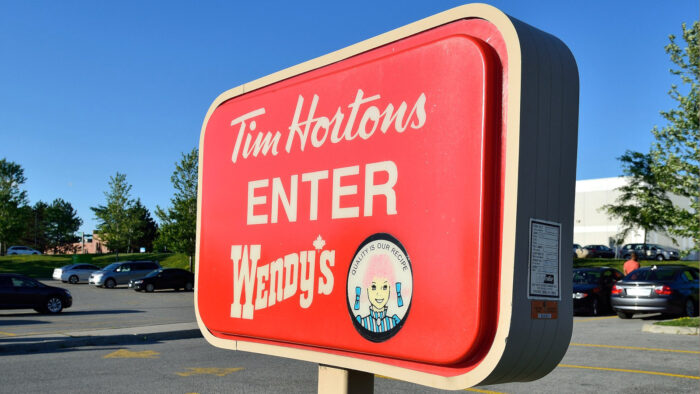
Wendy’s applies the 10 strategic decisions of operations management (OM) to address needs in various business areas. These 10 strategic decisions are aimed at streamlining the foodservice company’s activities.
As the third biggest hamburger restaurant chain in the world, Wendy’s must streamline its operations to effectively compete against aggressive fast-food firms, like McDonald’s, Subway, and Burger King, as well as coffeehouse chains, such as Starbucks.
Wendy’s operations management efforts are indicative of the company’s prioritization of business stability rather than international expansion. Nonetheless, the 10 strategic decisions of operations management are addressed in a way that supports Wendy’s potential expansion in more market areas.
Wendy’s operations management (OM) covers all the 10 strategic decision areas for its business. The company’s strategies are directed toward productivity and business stability and less at expansion in the global foodservice market.
The capabilities and competitive advantages discussed in the SWOT analysis of Wendy’s help facilitate managerial efforts for high productivity and successful foodservice operations.
Wendy’s Operations Management, 10 Decision Areas
1. Design of Goods and Services. Wendy’s emphasizes high output quality. This decision area of operations management pertains to the design of the company’s products and how it addresses business and market needs.
In this regard, Wendy’s strategy is based on product innovation to maintain product competitiveness. For example, the company occasionally rolls out new variants of its food and beverage products and new versions of its menu to improve sales and keep the business relevant to the target market.
2. Quality Management. In this strategic decision area, Wendy’s objective is to maintain high quality standards to match outputs and consumer expectations.
The company ensures that its operations managers are prepared to apply these standards for larger-scale operations when expansion starts.
Wendy’s mission statement and vision statement emphasize goals for high quality.
3. Process and Capacity Design. Wendy’s operations management strategy involves production lines. Many of the ingredients are prepared in the company’s production line facilities.
Also, even at the company’s restaurants, this system is used to maximize process efficiency and capacity utilization in all areas, especially for high productivity in food/meal preparation.
4. Location Strategy. Wendy’s strategy for this decision area of operations management is typical in the fast-food restaurant industry. For instance, the company maintains strategically located Restaurant Support Centers as support hubs for its franchisees.
On the other hand, Wendy’s restaurant locations are based on proximity to town and city centers.
The locations involved in this critical decision of operations management match the scope of corporate offices, departments, and divisions of Wendy’s corporate structure (business structure) to ensure adequate management support to maximize the productivity of restaurants.
5. Layout Design and Strategy. In this strategic decision area of operations management, the goal is to ensure that layouts facilitate efficient movement of people, materials, and information. Wendy’s does so through standard layouts for its restaurants and their kitchens.
Total Quality Management is also used as basis for the layout design and strategy of Wendy’s operations management in Restaurant Support Centers and supply chain facilities.
6. Job Design and Human Resources. Wendy’s Restaurant Support Centers provide HR training support for franchisees. In this way, the company satisfies its operations management objective of standardization in this strategic decision area.
Corporate control is applied through these centers, ensuring optimal human resource performance and alignment to Wendy’s company culture (work culture).
7. Supply Chain Management. This decision area of operations management involves the adequacy of the supply chain. In this regard, Wendy’s strategic objective is to diversify its supply chain.
Even though most of its operations are in North America, Wendy’s operations management approach maintains suppliers outside North America for a stable supply chain.
8. Inventory Management. Wendy’s uses a combination of centralized and decentralized approaches for this strategic decision area of operations management.
The company applies centralized inventory management to minimize stockouts throughout the inventory.
On the other hand, decentralization ensures that Wendy’s operations management is capable of responding to fluctuations in markets. For example, restaurant managers are given considerable autonomy for managing the inventory for day-to-day operations.
9. Scheduling. This strategic decision area of operations management focuses on implementing schedules that address customers’ needs. Wendy’s uses automation for scheduling many of its activities in the supply chain.
However, many operations at the company’s restaurants involve manual and semi-automated scheduling.
10. Maintenance. Wendy’s operations management strategy for this decision area is to use localized maintenance teams. Franchisees access local maintenance teams and services from the Wendy’s Restaurant Support Centers.
The company’s operations management also includes in-house maintenance teams for some areas, such as supply chain facilities.
Wendy’s Productivity Metrics
Wendy’s productivity is measured through a wide variety of criteria. Variations among franchisees’ operations management also lead to differences in the productivity metrics used.
The following are some of the most notable productivity metrics considered at Wendy’s:
- Stockout rate (inventory management productivity)
- Orders fulfilled per hour (Wendy’s restaurant productivity)
- Rate of problems solved (Restaurant Support Center productivity)
References
- Gauss, L., Lacerda, D. P., Siluk, J. C., & Romme, A. G. L. (2025). Design science in operations management: A review and synthesis of the literature. International Journal of Management Reviews, 27(2), 221-237.
- Singh, S., & Vijay, T. S. (2024). Technological advancements and adoption in the foodservice industry. Journal of Foodservice Business Research, 1-3.
- The Wendy’s Company – Form 10-K.
- The Wendy’s Company – What We Value.
- Wendy’s Supplier Code of Conduct.
- Zhang, X., Denicol, J., Chan, P. W., & Le, Y. (2024). Designing the transition to operations in large inter‐organizational projects: Strategy, structure, process, and people. Journal of Operations Management, 70(1), 107-136.